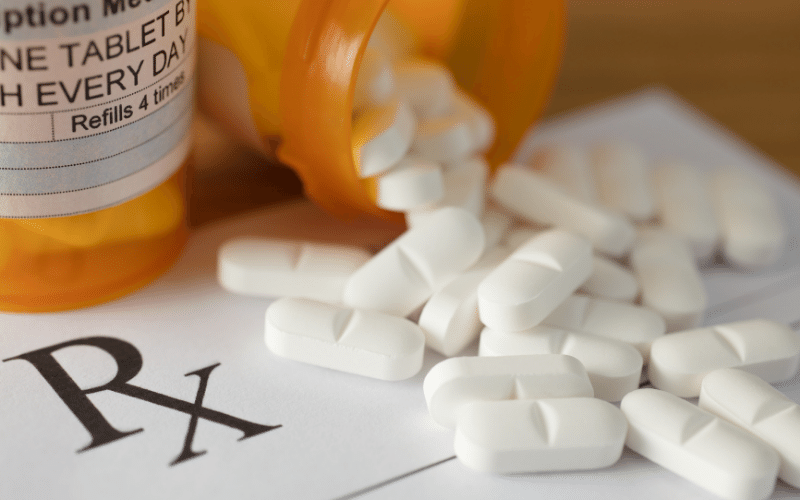Pseudoephedrine addiction is relatively rare; not everyone finds themselves becoming addicted to this popular nasal decongestant. However, many children and teenagers turn to these over-the-counter solutions like Sudafed for a quick buzz. When we learn about shocking pseudoephedrine addiction facts and statistics, we notice a glaring trend that needs attention. Read on for more information, and if you or a loved one is struggling and in need of a pseudoephedrine addiction treatment program, Lighthouse Recovery Institute can help.
What is Pseudoephedrine?
Pseudoephedrine is a stimulant from the Ephedra plant, but today, most pseudoephedrine comes from laboratories. As a nasal congestion medication, pseudoephedrine is available in brands like Sudafed. It works by shrinking tissue in the nasal passages to decrease congestion and drain the sinuses, and the over-the-counter solution is available in tablets and topical cream presentations.
Pseudoephedrine is also available in prescription-strength presentations, but these require an order from a doctor and tend to produce heightened, faster, and longer-lasting results. Although these have a low potential for abuse, some people, especially children, still find ways to abuse the drug as a quick way to get high.
5 Interesting Pseudoephedrine Addiction Facts You Should Know
Because pseudoephedrine is such a common active ingredient in over 100 over-the-counter medications, most people don’t consider the harmful effects. However, although rare, pseudoephedrine addiction can lead to other substance abuse problems and significant health issues. These are just a handful of pseudoephedrine facts that show how serious the problem is.
1. Pseudoephedrine Can Be a Gateway Drug for Other Substances
It’s very easy for teenagers and young adults to start using Sudafed as an experiment. Still, once they enjoy the initial high, they can develop a dependency and, later, an addiction. Most users start gravitating towards other substances like meth since the highs are similar; people often gravitate to easier-to-find, cheaper alternatives to sustain their addiction in the long run.
2. How It Becomes Addictive
Sudafed abuse occurs when someone takes more than the recommended medical dose because Sudafed produces feelings of energy, alertness, and euphoria in users. While these effects are only nominally felt at the recommended medical dose, they’re much more potent when abused. By itself, it’s not a highly addictive substance. However, improper use is what becomes a concern. Like other addictive drugs, pseudoephedrine targets the brain’s reward system by creating a surge in dopamine levels. When people experience the intense euphoric effects, they keep trying to repeat the experience, creating a physical and psychological dependence that builds into tolerance and eventually an addiction.
3. Pseudoephedrine Produces a High Similar to Other Stimulants
The high produced by pseudoephedrine is similar to other stimulants. Common effects include increased athletic ability and management of ADD or ADHD symptoms. Many individuals purposely take an excessive amount of pseudoephedrine to achieve a high similar to other stimulants like cocaine or even meth; in large doses, it will cause a sudden rush of energy, excitability, and hyperactivity. This is the rush people try to replicate over time.
4. Various States Are Limiting OTC Access to Pseudoephedrine Medications
While pseudoephedrine is not controlled by a prescription, you do have to ask the pharmacist for it, show identification, and sign a waiver to purchase it. However, most pharmacies are not holding products like Sudafed behind the counter to prevent teens from purchasing them. In some states, people can only buy one Sudafed product at a time to avoid people stocking up or misusing the medication. For example, Oklahoma has a real-time monitoring system that tracks purchases of any drug containing pseudoephedrine and limits the amount a single person can buy.
5. The Dangerous Meth Connection
One of the biggest dangers of pseudoephedrine is its potential use to make meth. As you might know, meth is a highly addictive street drug that can lead to fatal consequences. Because pseudoephedrine is readily available at most pharmacies, teenagers and street dealers buy it to make cheaper meth. This is why some state governments are considering requiring a prescription for pseudoephedrine-based medications. Individuals who come to abuse Sudafed and similar products may be more susceptible to meth addiction, often substituting in the meth when they can’t access pseudoephedrine.
Pseudoephedrine Abuse Statistics
Although pseudoephedrine abuse statistics are not extensive, some studies examine how people use it and its effects. So many popular allergy-relief medications and cold medicines have pseudoephedrine as their active ingredient that it’s almost impossible to track the single use of the drug. However, the National Institute on Drug Abuse statistics gravitate towards methamphetamine abuse numbers.
- In 2008 approximately 13 million people over the age of 12 abused methamphetamines.
- An alarming 50% of teens aren’t properly educated on OTC medications, potentially leading to dangerous misuse of these drugs.
- Just 8% of parents surveyed knew about nasal decongestant abuse.
- In 2006, decongestants sent between 593 and 2,428 people to the ER.
Pseudoephedrine Addiction Treatment Options
Pseudoephedrine dependency can lead to many physical and psychological issues that can have long-term consequences. However, because of the severe effects of withdrawal symptoms, having the right support system is critical to prevent deadly outcomes.
Most people starting their pseudoephedrine addiction treatment are recommended a detox program paired with a partial hospitalization program (PHP) that eases withdrawal symptoms and provides patients with a secure and supervised environment to begin their recovery. Many treatment facilities can help structure the right treatment plan. At Lighthouse Recovery Institute, our addiction recovery programs include:
- Medical detox – In this clinically supervised detox process at treatment centers, we ensure the patient’s safety and make the withdrawal phase as comfortable as possible by minimizing withdrawal symptoms and using medication-assisted treatment services to guarantee a complete detoxification process.
- Dual diagnosis treatment – Since many long-term addicts often struggle with mental illness, a dual diagnosis program can get them the help needed to treat both conditions simultaneously.
- Cognitive-Behavioral Therapy – Most of the time, these sorts of addictions develop due to compulsive behaviors that must be treated at the source, with CBT being one of the most popular evidence-based treatments to treat addiction.
- Intensive outpatient programs – When patients are looking to seek addiction treatment while maintaining daily obligations like work, school, or caregiving, IOPs are a more flexible option that still gives people access to the help they need.
- Long-term recovery programs – With long-term recovery assistance, patients can have the ongoing support they need to maintain long-lasting sobriety. Recovery programs are crucial to relapse prevention.
Get Help Today
If you or someone you love is struggling with substance use disorders, ask for help immediately. Please, call Lighthouse Recovery Institute at 866.308.2090 today and speak with our addiction specialists to learn more about our comprehensive and personalized addiction treatment programs.
Our addiction center offers unique and personalized treatment plans because we believe no two addictions are alike. The journey towards recovery is a long one, but together and with your family and friends’ support, we’ll make it.









